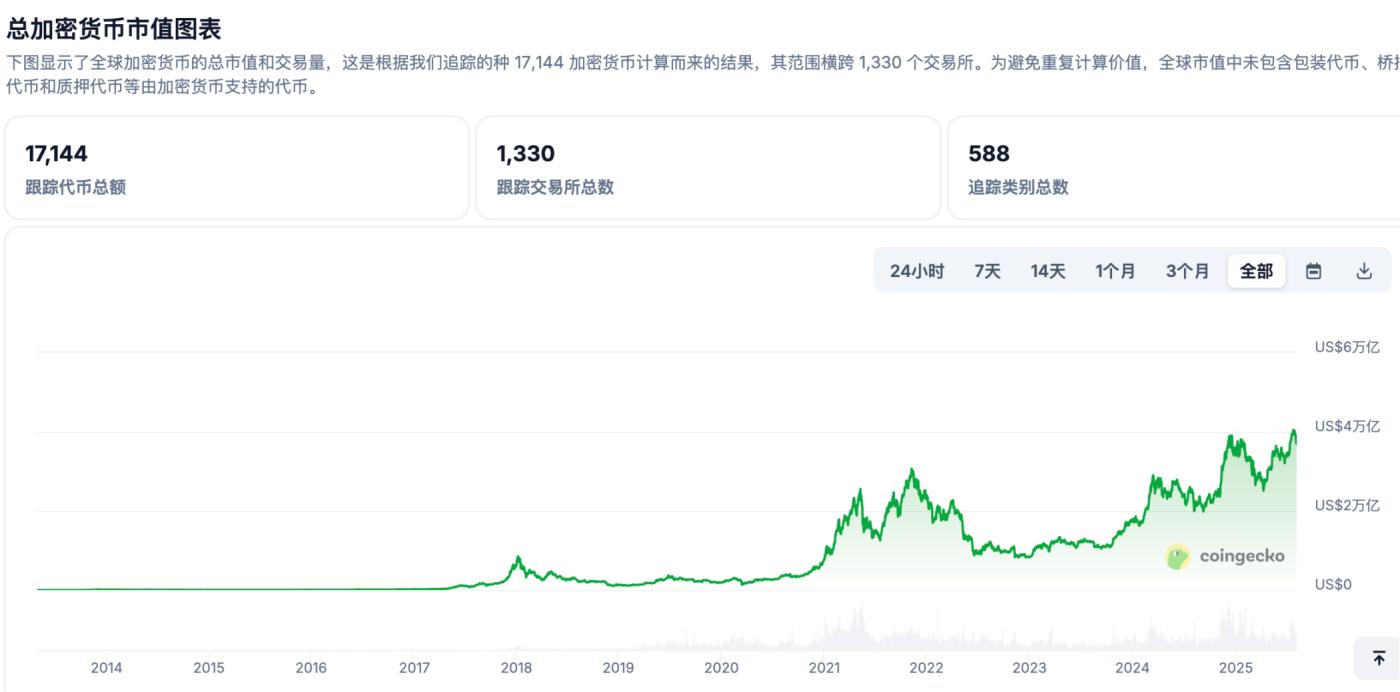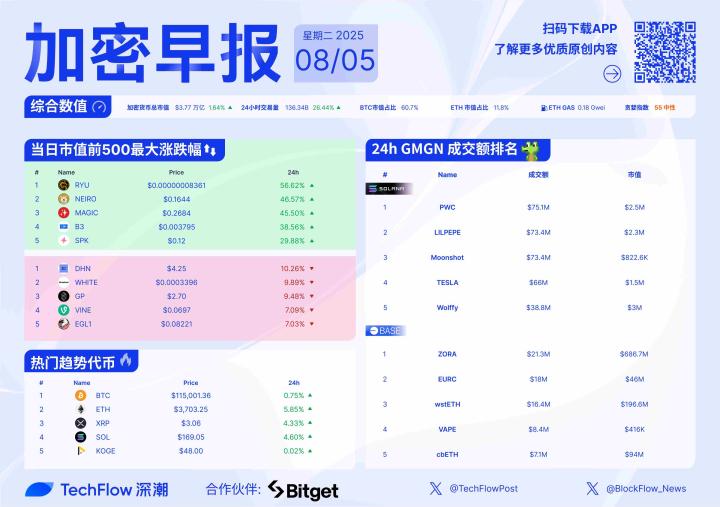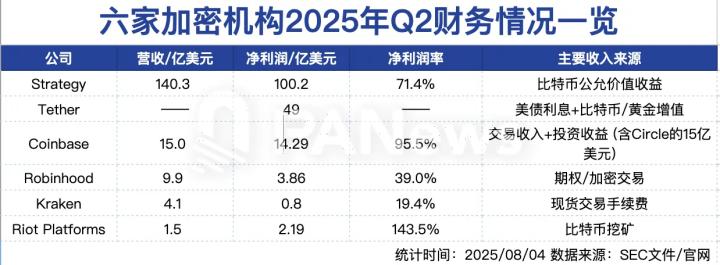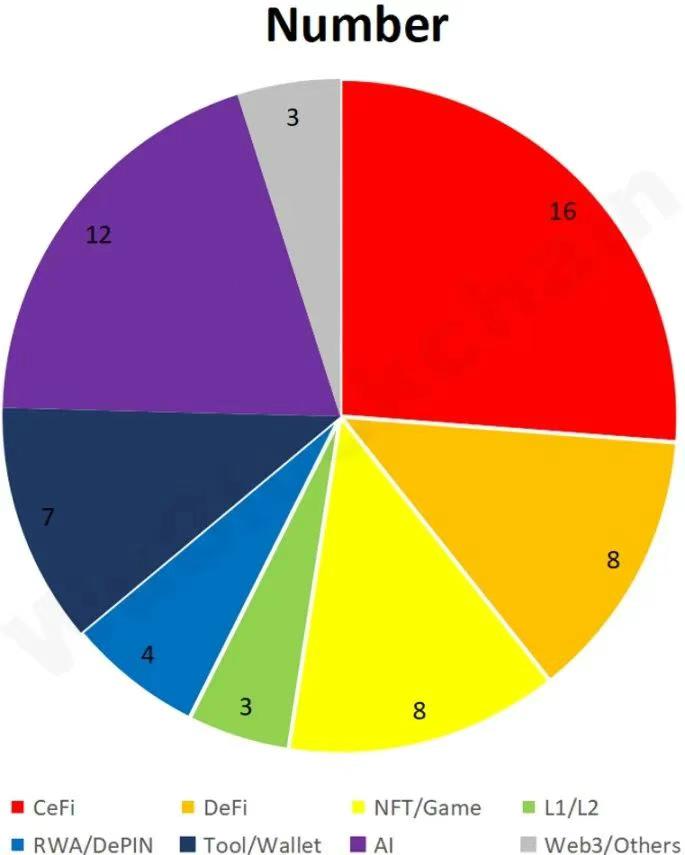Author: Bright, Foresight News
Will the Altcoin season return?
This is the question of almost all crypto players. After all, in the previous bull market of 2020-2021, few would shout All in BTC, and Altcoins with 5x gains during DeFi Summer were everywhere. The total cryptocurrency market value soared from about $200 billion in January 2020 to slightly over $3 trillion in November 2021. It can be said that 90% of those who truly won in this bull market were Altcoin enthusiasts.
However, the cruel reality is that new assets will certainly come, and the Altcoin season's outbreak is unlikely in the current situation.
The Defeated Altcoin Army
While many are still waiting for the Altcoin season, four years later, the crypto industry has actually quietly approached the end of the bull market. Between 2024 and mid-2025, the total cryptocurrency market value has actually grown dramatically by 130%.
On November 15, 2021, BTC's highest point was around $69,000, with the cryptocurrency total market value peaking at about $3 trillion; on July 14, 2025, BTC's highest point was $123,091, with the total market value peaking at about $3.91 trillion.
In contrast, including the garbage Memecoins issued during the Meme wave, millions of Altcoins already exist on-chain. This round, Altcoins have suffered a massive defeat.

To this, we can only say: Sorry, we failed.
The inability to Make Altcoin Great Again is actually the painful process of cutting away the excess flesh grown during the crypto industry's previous wild period, while holding high the compliance main theme.
Wall Street's Land Grab Game
Under the US crypto compliance trend, Wall Street's regular army, which originally dared not move, began to flood into the crypto "minefield" during the Biden administration, simultaneously planting the financial hegemony's colonial flag on the chain.
From a player perspective, the gaming landscape composed of whales, retail investors, miners, and crypto institutions is gone forever. Retail investors who jokingly call themselves "Nasdaq, Dow Jones crypto traders" have genuinely become the counterparty to Wall Street's professional hedge funds.
From an asset perspective, VC's carefully designed low-circulation, high-market-value gameplay no longer works; unregulated Meme coins continue to bleed after retail investors lose interest; DeFi also doesn't seem to be the first choice for institutional hot money.
In fact, Wall Street's wealthy institutions entering the crypto space first used capital power to control Bitcoin, the most "decentralized" asset with the highest industry consensus, such as Grayscale's Bitcoin ETF; second, they spread their already controlled financial power into crypto, attracting native crypto investors to switch investment categories, like stock tokenization and Altcoin "MicroStrategy" companies; the third step is to issue new crypto-related assets that comply with existing financial regulations, completely controlling crypto asset pricing rights, such as crypto company IPOs.

The Wall Street hot money that crypto natives hoped for did not stupidly rush into the already occupied "decentralized" track. In other words, they chose to play their own game, and moreover, they want to force you to play their game with their white money.
If you can't beat them, join them.
IPO Tide Undercurrents
On June 5, Circle went public on the New York Stock Exchange, with its stock price surging over 160% on the first day, later rising to a high of $289.99, representing a shocking 9.64x increase from the issued price of $31. Meanwhile, cryptocurrencies could only be described as performing averagely.

Circle's investment return is the authentic flavor of previous Altcoin seasons. Following this, a series of crypto-related companies announced IPO plans for the second half of 2025, including US domestic exchanges like Kraken, FalconX, Gemini, Bullish, Fintech companies, asset management firms like Bitgo, Grayscale, Figure, and even rumors of OKX going public in the US. Besides the bustling US stocks, Korean exchange Bithumb stated a two-step strategy targeting Korean KOSDAQ and US Nasdaq, while Thai exchange Bitkub plans to list on the Thai Stock Exchange.
On July 30, US exchange Kraken was reportedly seeking to raise about $500 million at a $15 billion valuation, again stimulating the crypto industry.
Previously, Robinhood announced entry into stock tokenization, even offering shares of unlisted top companies like OpenAI and SpaceX, officially opening up Pre-IPO imagination. During recent Kraken IPO speculation, private equity trading platforms like Forge conveniently provided entry and exit channels for those "wanting to sell" and "wanting to buy early".
Generally, investors can purchase unlisted company shares through two methods: first, P2P mode, and second, SPV mode. Using Kraken as an example, P2P mode involves the platform matching Kraken stock rights sellers and buyers, with the trading platform assisting in KYC, due diligence, and contract signing. In SPV mode, the trading platform establishes a special purpose vehicle (SPV) to collectively purchase target company shares after pooling buyer funds.
Currently, the price on the Forge platform is $36.13, with a valuation of about $10 billion. If Kraken successfully goes public at a $15 billion valuation, current entrants might obtain over 50% excess returns.

In essence, crypto company IPOs are like the industry's coming-of-age ceremony. After receiving this, the company will gain widespread global recognition, but this also means it must shed childish things. Yes, referring to those garbage projects that can't calculate P/E ratio and only know how to make PPT.








